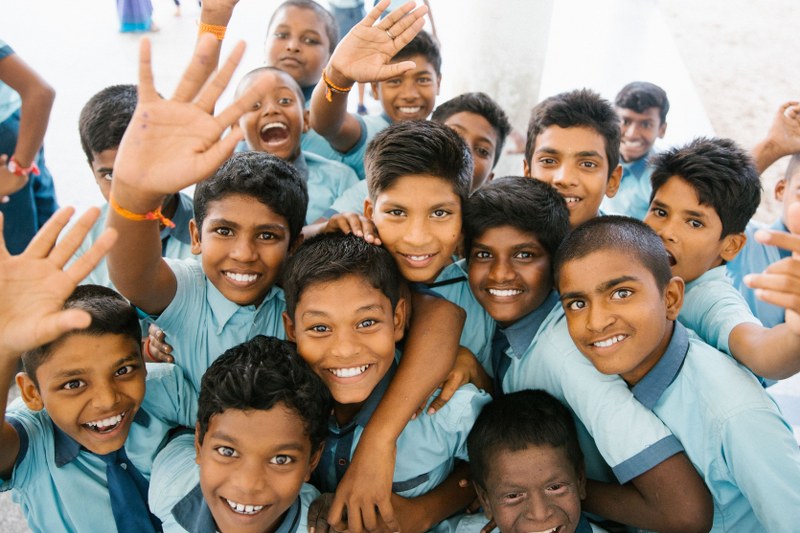
Over 25% of rural teens 14-18 grapple with reading, Class 3 math skills lacking for most: ASPER 2024 Survey
New Delhi: Nearly 25% of adolescents aged 14-18 struggle to read a 2nd-grade level text in their regional languages, according to the latest Annual Status of Education Report (ASER) survey.
At least 42.7% of them read sentences in English with difficulty, the survey revealed.
In the 14-18 age group, 26.5% were unable to read a Class 2-level textbook in their regional language, and just under half, 42.7%, struggled to read sentences in English.
Among those who could read these sentences, more than a quarter 26.5% did not grasp the meaning of the content.
The ASER 2023 report, titled "Beyond Basics" and conducted by the Pratham Foundation, sheds light on rural Indian youth aged 14 to 18, surveying 34,745 individuals in 28 districts across 26 states. This age group was last covered in the ASER report in 2017.
A majority of the students surveyed, specifically 56.7%, were unable to solve a basic division problem involving a 3-digit number divided by a 1-digit number. The proficiency in division is considered a proxy for the capability to perform fundamental arithmetic operations.
Moreover, ASER 2023 evaluated the surveyed individuals on their competence in applying fundamental arithmetic and reading skills to practical scenarios such as everyday calculations, comprehending written instructions, and financial calculations.
The most worrying indicator, less than half of them, nearly 45%, could calculate the number of hours a child had slept based on the time she went to bed at night and woke up in the morning.
In most of the tasks assessing the application of basic numeracy and reading skills, boys consistently performed better than girls. For example, in the 14-18 age group, 45% of boys showed the ability to perform at least division, compared to 41.8% of girls. When presented with a scenario involving time calculations, 50.5% of boys were able to perform the task, whereas only 41.1% of girls exhibited the same proficiency.
The report indicates that 86.8% of 14 to 18-year-olds are enrolled in school or college, with enrollment percentages decreasing with age.
It is worth noting, concerns during the Covid-19 pandemic about older children dropping out of school due to livelihood threats were deemed unfounded, as the proportion of out-of-school children has been consistently decreasing, driven by government efforts to universalize secondary education.
However, the report highlights a lack of significant improvement in foundational literacy and numeracy skills (FLN) despite prolonged school attendance.
In 2017, 76.6% of 14-18 year olds could read at a 2nd-grade level, compared to 73.6% in 2023. In arithmetic, the ability to solve simple division problems (grade 3-4 level) increased slightly from 39.5% in 2017 to 43.3% in 2023.
However, over half of the teens struggle with more complex division problems, with only 43.3% able to solve them correctly.
The report also notes gender disparities, with boys outperforming girls in various tasks testing basic numeracy and reading skills.
Despite the extended duration of school attendance, the ASER 2023 findings underscore the persistent challenge of inadequate foundational skills among young people in India.
Emphasising the importance of foundational learning and life skills, “not just for academic advancement but also to traverse daily life,” ASER Centre Director Wilima Wadhwa said, “At some level, India is in a unique position right now… For India to become the world’s third-largest economy, the quality of our labour force has to keep pace with our developmental needs. We can only reap the demographic dividend associated with a young population if our youth are well supported to achieve their aspirations and participate productively in the growth process of the economy.”
The survey shows that more than half (55.7%) of the young people in this age group were enrolled in the Arts/Humanities stream, followed by STEM (31.7%) and Commerce (9.4%). “More males report enrolling in the STEM stream (36.3%) than females (28.1%),” the report said.
The report also revealed that nearly 89% of the surveyed students had a smartphone in their households, and 92% said they were familiar with its usage.
Support Our Journalism
We cannot do without you.. your contribution supports unbiased journalism
IBNS is not driven by any ism- not wokeism, not racism, not skewed secularism, not hyper right-wing or left liberal ideals, nor by any hardline religious beliefs or hyper nationalism. We want to serve you good old objective news, as they are. We do not judge or preach. We let people decide for themselves. We only try to present factual and well-sourced news.







